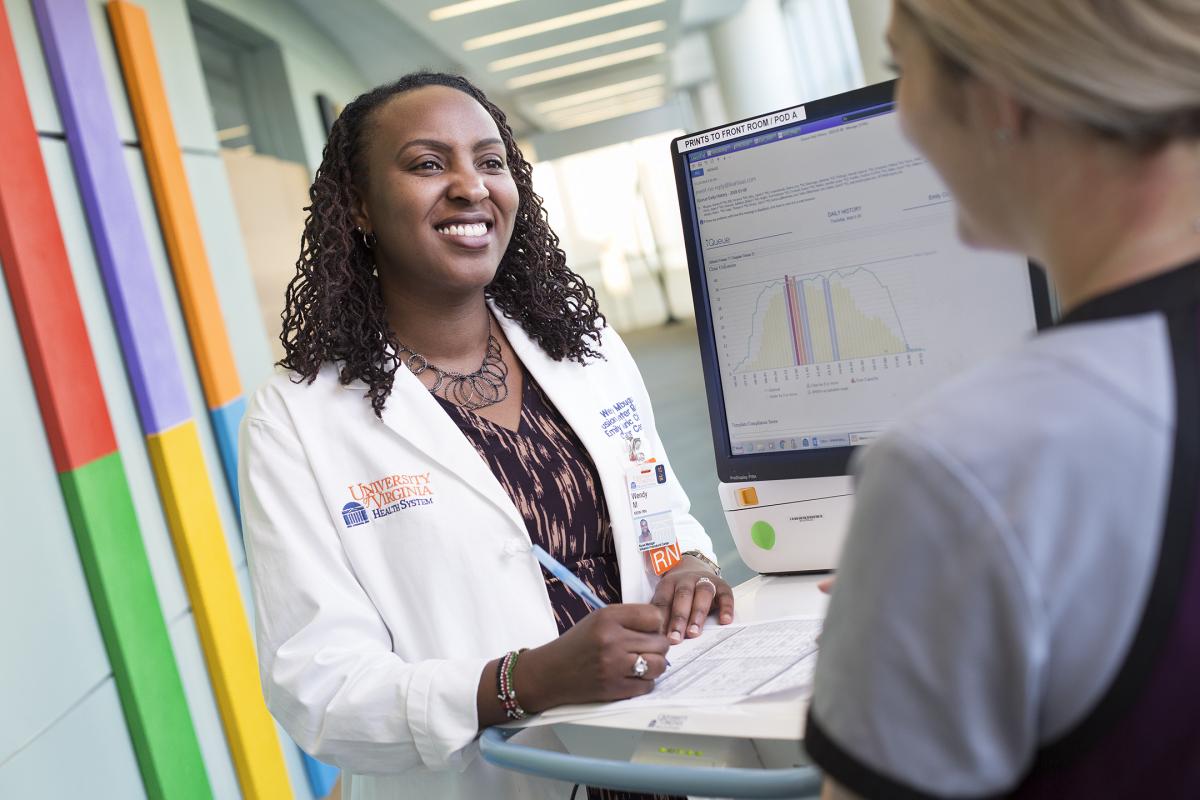How Algorithms Can Improve Patient Experience
UVA Cancer Center’s Infusion Center is open seven days a week, 363 days a year. It includes both private and communal treatment areas, thanks, in large part, to private support from across the community. Specially trained nurses administer a variety of treatments, including chemotherapy and therapies for various chronic conditions.
With great care comes growth, and in the past four years alone, the infusion center has seen a 100% patient volume increase. Now, anywhere from 110 to 175 patients come through the center’s doors for treatment each day.
A higher volume of patients presents an important challenge: How do you add appointments to an already bustling daily infusion schedule—without detracting from patient or caregiver experiences?
This past November, a cutting-edge scheduling technology called iQueue provided the perfect solution. Designed by healthcare analytics company LeanTaas Inc., iQueue leverages data from a hospital’s electronic medical records and then combines advanced data science, complex mathematical algorithms, and machine learning to revitalize healthcare operations.
“This challenge of scheduling patients for infusion is not unique to UVA—it’s pervasive,” says Jody Reyes, MSBA, cancer services administrator. “I see this product becoming a staple at infusion centers across the country. We’re blessed that our leadership listened to us and trusted us to find a solution, and then gave us the support to implement it.”
Each patient’s infusion requires a different amount of time, depending on variables such as pre-treatment lab work or drug preparation. iQueue uses mathematical calculations to schedule patients according to the expected duration of their treatments. The system becomes smarter the more it is used, as it learns the unique patterns of patient flow at UVA.
During the six weeks prior to iQueue going live, patient wait times averaged two hours. The unpredictable wait times caused a strain for nurses as well, who often worked overtime just to wrap up their patients’ treatments.
“We had patients we were committed to caring for, but we couldn’t deliver that care in the way we wanted,” Reyes says.
Six weeks after iQueue launched, wait times were reduced drastically—to mere minutes. The trend has continued, improving efficiency by enhancing access to care for all patients, including walk-ins, and reducing staff overtime.
“The schedule is level-loaded so that patients come in on time and leave on time,” says Wendy Mbugua, manager of the infusion center. “Appointments are spread throughout the day, and we are able to treat patients in a timely manner. We were able to use this technology to improve the way we scheduled our patients to enhance their experience.”
Patients are pleased with shorter wait times. And if patients are happy, the staff is happy, too.
“The staff is so appreciative of their time at work being respected and gaining a good work-life balance. Morale is key to what we do, and iQueue has enhanced it tremendously,” Mbugua says. “We take care of really sick people here, and it’s a good feeling to know that they are no longer having to wait a long time for their treatments. Now when you walk in the waiting room, there are just a few people sitting there at any given time, and the patients seem more relaxed. It’s an overall revitalized experience for everybody who comes to the infusion center.”

